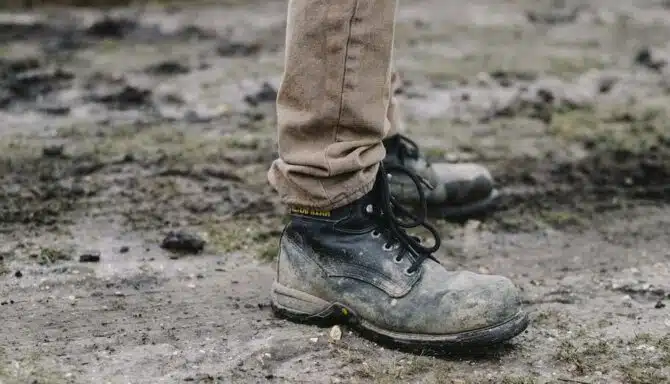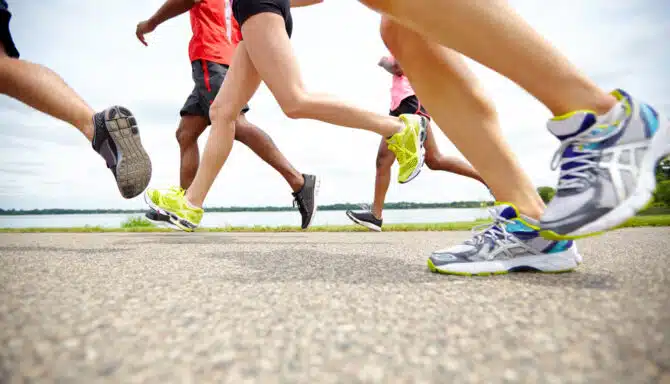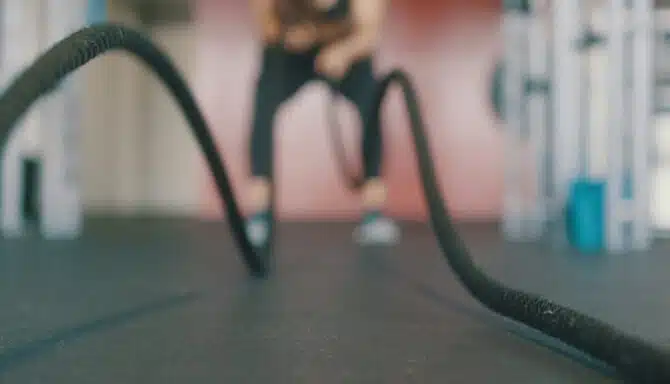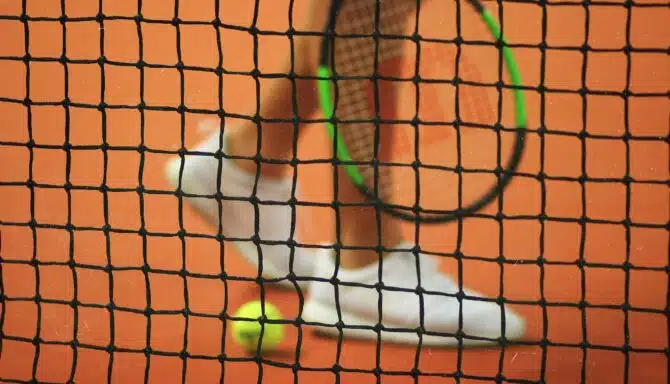June 27, 2024
Construction workers face challenging demands on the job site, including long hours, potential safety hazards, and variable weather conditions. There are few jobs where footwear is more important than on a construction site. Proper footwear is critical for comfort, safety, and overall health.
This blog explores how to find the best shoes for construction workers. We dive into the balance between durability, safety features, and foot health, which are vital for your job.
Durability
Construction sites are full of heavy equipment and sharp objects and tools. Hazards range from sharp objects to heavy machinery. The best shoes and boots for construction workers should be durable, made from leather or synthetic blends, and be able to withstand abrasions and falling objects. Keep your toes and feet safe with toe caps or sturdy outsoles - ideally both.
Refined safety features
Safety is a top priority on the job site. When choosing footwear, opt for models that meet or exceed industry safety standards set forth by the Canadian Centre for Occupational Safety and Health.
Features like steel or composite toe caps provide essential protection against impact and compression injuries, while puncture-resistant midsoles shield your feet from sharp objects on the ground.
Additionally, slip-resistant outsoles help prevent accidents on wet or slippery surfaces, reducing the risk of slips and falls. Refer to the CCOSH's guide for symbols, or markings, on footwear to determine which is appropriate for the job.
Comfort
Long hours spent on your feet can be grueling. It's not uncommon for construction workers to be on their feet for 10+ hours per day. Shop for shoes with adequate support through the arch and heel, and invest in removable insoles or orthotic inserts for even greater support. If you're a construction worker in Toronto, our licensed chiropodists can do a biomechanical assessment to determine the best insoles for your foot condition.
Grip and footing
The type of flooring used in the workplace influences comfort, especially on feet. Unforgiving surfaces like concrete are the least comfortable to work on—your feet and legs absorb all the impact compared to a softer surface. Further, slippery floors (whether smooth or wet) are hazardous for slips and falls. If not careful, you can be exposed to injuries like sprained ankles or broken foot bones.
Fit
Durability and safety features are effective only when your shoes fit the contours and mould of your foot. When trying construction footwear, test out the fit with the same socks and attire you'd be wearing on the job site. If you decide to purchase online, we recommend using the manufacturer's sizing guide for directions, or finding a local retailer to try the shoes on in-store.
May 16, 2024
Top-notch athletic foot health is key, especially when summer rolls around. Your activity level changes in the summer when you start spending more time outdoors pounding the pavement in the sun. To make sure your feet don't hold you back from your summer plans, here are our top summer sports foot care tips for healthy feet.
Preventing Summer Sports Injuries in Athletes
When it comes to foot care and sports, the right footwear and healthy exercises/stretches are always a winning combo. Below you’ll find the most common strain-related summer sports injuries and what you can do to stay on your feet!
Achilles Tendonitis
Avoid straining the Achilles tendon by gradually increasing activity intensity. For example, run shorter distances while working your way up to longer journeys.
Stretch the calf muscles / Achilles tendon every day. Try the calf exercises in this article. Also make sure you stretch your soleus muscle too!
Wear runners with an elevated heel, turned-up toe and rocker soles. (Learn more about rocker soles here.)
Ankle Sprains
Wear athletic shoes with stong ankle support while playing sports like basketball and volleyball. Shoes with wider soles can help too.
If you’re prone to sprains or tend to overpronate when you walk, try stability shoes.
Strengthen your ankles with these exercises.
Stress Fractures
Stability and motion control shoes with a more rigid design and thick soles are good for runners who may be prone to stress fractures.
Gradually increase activity intensity to avoid hurting yourself, especially if you have been on hiatus!
To avoid stress fractures while strength training or weight lifting, wear a shoe with a wider toe box, a hard/thick sole and a minimum level of cushioning.
Plantar Fasciitis
Wear the best shoes for plantar fasciitis. These tend to be stability shoes, but neutral can also work. The key thing is to look for shoes with sufficient arch support.
Perform strengthening and preventative stretches that target the plantar fascia. These include calf stretches, towel stretches, and more that you can find here.
Runner’s Knee (Patellofemoral Pain Syndrome)
Prevent knee pain by strength training, paying close attention to the quadriceps and hip muscles.
Avoid shoes with a raised heel, as they can place too much pressure on the knee joint.
There should be a medium amount of cushioning in shoes; too much can cause knee instability.
Foot Care Tips for Preventing All Injuries
Footwear should always be well-fitted and supportive, regardless of what injury you're trying to prevent.
Certain features can help defend against specific injuries, but shoes must always fit properly, leaving enough room for the foot to position itself and for the toes to spread. Shoes must also always have some level cushioning and support. Lightweight shoes tend to be beneficial for athletes when competing so they can propel forward more effortlessly. Additionally, athletes should always wear running shoes with good shock absorption; it acts as a barrier between your joints and the impact from the ground.
You can also boost your protection with custom orthotics or Superfeet insoles. These offer extra support for your feet and joints.
Preventing Skin Conditions in Athletes
One of the most infamous skin issues athletes face in the summertime are blisters. Running outside in the hot sun can cause increased friction and moisture buildup in your shoe environment. Even though most blisters go away on their own, competitive runners and racers can sometimes face serious blister complications like intense pain, sepsis, and cellulitis.
Ensure your footwear fits well so your skin isn’t rubbing harshly against your shoes. To tackle the moisture problem, try sweat-wicking socks and foot deodorants, which come as sprays, powders and creams (these can also help with foot odour and athlete's foot prevention). Medical devices like custom orthotics, insoles and blister pads can also help place feet in the best position for preventing blisters.
May 2, 2024
Whether you're hitting the gym, running, or attending a fitness class, proper footwear is essential for optimizing performance, preventing injuries, and ensuring comfort throughout your workout. With so many options available, choosing the right shoes can be overwhelming. In this blog post, we'll break down the critical considerations for selecting the perfect pair of shoes for your specific workout needs, so you step confidently into your fitness journey.
Understanding your feet
Before making shoe selections, understand your feet and movement patterns. Consider factors such as foot shape, arch type, pronation (how your foot rolls inward), and activities you engage in. For example, those with flat feet may require extra arch support, while individuals with high arches may benefit from cushioned shoes to absorb shock.
Key factors for working out
Running
Choosing the right shoes for running is essential to preventing injuries and enhancing performance. Look for running shoes that provide ample cushioning to absorb impact and support to promote proper alignment. Consider factors such as your running gait, terrain, and distance when selecting shoes, and opt for models designed specifically for road running, trail running, or racing, depending on your needs.
Cross-training
For cross-training activities such as weightlifting, HIIT (high-intensity interval training), and circuit training, opt for versatile shoes that offer stability, support, and flexibility. Look for shoes with a flat sole and firm heel to provide a solid base for lifting weights and enough cushioning to support dynamic movements like jumps and lunges.
Walking
Whether walking for exercise or daily activities, selecting the right shoes is essential for comfort and support. Look for shoes with cushioned midsoles, supportive arches, and durable outsoles to provide shock absorption, stability, and traction. Consider breathable uppers and moisture-wicking linings to keep your feet cool and dry on longer walks.
Other sports
Choose shoes designed for specific sports, such as tennis, basketball, or soccer, to meet the unique demands of each activity. Look for shoes with lateral support for quick cuts and pivots, ankle support to prevent sprains, and durable outsoles for traction on court surfaces.
Additional tips for footwear selection
Try shoes in the afternoon or evening when your feet are slightly larger.
Wear the socks you typically wear during workouts to ensure the right fit.
Test the shoes by walking, jogging, or performing movements similar to your workout routine to assess comfort and support.
Replace worn-out shoes regularly to maintain optimal performance and prevent injuries. For runners, shoes typically wear out around 800 kilometres.
April 15, 2024
For athletes, maintaining peak performance and preventing injuries is paramount. While much focus is often placed on strength training, conditioning, and proper technique, one crucial aspect that is sometimes overlooked is foot care. Our feet bear the brunt of athletic activities, absorbing shock, providing stability, and propelling us forward. So taking care of our feet is very important for preventing sports injury.
The term "sports injury" refers to injuries most common during sports or exercise but are not limited to athletes. For example, factory employees may get tennis elbow, or those working retail may get plantar fasciitis or Achilles tendonitis. Generally, however, "sports injuries" occur in active individuals.
In this blog post, we'll explore essential foot care tips for athletes to help prevent sports injuries and keep them at the top of their game.
1. Choose the right footwear
The foundation of foot care for athletes begins with selecting the appropriate footwear. Different sports require specific types of shoes to provide adequate support, cushioning, and stability. For example, runners should opt for running shoes with ample cushioning and support, while basketball players may benefit from high-top sneakers for ankle support. Replacing worn-out shoes regularly is essential to maintain optimal support and cushioning.
2. Ensure proper footwear fit
Improperly-fitted shoes may lead to foot problems, including blisters, bunions, and ingrown toenails. Athletes should pay close attention to the fit of their shoes, ensuring enough room in the toe box to prevent cramping and rubbing. Additionally, shoes should provide a snug but comfortable fit around the heel and midfoot. A proper fit around the low ankle prevents slipping and instability during activity.
3. Practice good foot hygiene
Proper foot hygiene is essential for preventing fungal infections such as athlete's foot and toenail fungus. Athletes should wash their feet daily with soap and water, paying particular attention to the spaces between toes. After washing, thoroughly dry the feet, especially between the toes, to prevent moisture buildup, which can create an environment conducive to fungal growth.
4. Stretch and strengthen
Incorporating stretching and strengthening exercises into your routine can help improve flexibility and stability, reducing the risk of injury. Focus on stretching the calves, Achilles tendon, and plantar fascia to maintain optimal range of motion and prevent tightness that can lead to injuries such as Achilles tendonitis and plantar fasciitis. Additionally, incorporate exercises that target the muscles of the feet and ankles, such as toe curls and ankle circles, to improve strength and stability.
5. Listen to your body
The most crucial aspect of foot care for athletes is listening to your body and promptly addressing any signs of discomfort or pain. Ignoring pain or pushing through injuries can lead to further damage and prolonged recovery time. (Muscle injuries require an average of 2 to 3 weeks of recovery time.) If you experience persistent pain, swelling, or discomfort in your feet or ankles, seek professional medical attention to prevent further injury and expedite healing.
February 12, 2024
Travelling is a thrilling adventure that opens up new horizons and experiences. Whether exploring bustling cities, hiking scenic trails, or relaxing on pristine beaches, your feet play a crucial role in making your journey enjoyable.
However, neglecting foot health during travel can lead to discomfort and potentially ruin your trip. To ensure your feet are happy and healthy throughout your trip, here are some essential foot care tips for travelers.
Choose the right footwear
The foundation of healthy feet starts with the proper footwear. Prioritize comfort and support over style, especially if you plan on doing a lot of walking. Invest in well-fitting shoes with good arch support, cushioning, and breathable materials to prevent blisters and discomfort. Break in new shoes before your trip to avoid surprises or issues like blisters.
Wear compression stockings on the flight
When we fly, we're often in cramped quarters for long periods of time, often sitting with our knees bent and unable to move. This affects our veins ability to function, leading to fluid build-up in the lower extremities which causes our legs to swell and feel "heavy". It can also lead to thrombosis ("traveler's thrombosis") in severe cases, which is a serious medical concern. That's why one of our top foot care tips for travelers is to wear graduated compression stockings during your flight - even if you don't have a history of circulatory issues. Your legs will thank you!
Pack moisture-wicking socks
Moisture-wicking socks help dry your feet by drawing sweat away from your skin. This can prevent fungal infections and discomfort caused by dampness. Pack enough socks for your trip, and consider bringing a few moisture-wicking socks for days when you'll be on your feet for extended periods.
Practice regular foot exercises
Long flights, train rides, or even extended periods of walking can lead to stiffness and discomfort. Perform simple foot exercises like ankle circles and toe stretches to improve circulation and flexibility. These exercises can be done discreetly, even sitting in a cramped airplane seat.
Keep feet clean and dry
Maintaining good hygiene is an essential component of foot care for travelers. Wash your feet daily and thoroughly dry them, paying attention to the spaces between your toes. Wet and dirty feet are more prone to infections, so carry a small towel in your travel kit.
Elevate and massage your feet
After a day of exploring, give your feet some well-deserved rest. Elevate your feet to reduce swelling and improve circulation. For instance, one tactic may be using a foot hammock on a flight that keeps your lower legs elevated. Alternatively, consider wearing compression stockings to help reduce inflammation, especially on long-haul flights.
A gentle foot massage can also help relax tired muscles and enhance blood flow. Consider using a foot roller or a small massage ball to alleviate tension.
Protect against the sun
If your travels involve beach activities or outdoor adventures, protect your feet from the sun and potential injuries. Apply sunscreen to your feet to prevent sunburn, and wear appropriate footwear to shield against sharp objects or uneven terrain. A small first aid kit can also come in handy for minor cuts or blisters.
Stay hydrated (before, during, and after travel)
Proper hydration is essential for overall health, including the well-being of your feet. Dehydration can lead to muscle cramps and increased foot discomfort. Drink enough water throughout your travels to adequately hydrate your body – including your feet.
Evidence shows that long-haul flights promote fluid shifts to the lower extremities and induce changes in blood viscosity, which may accelerate dehydration.
Know when to rest
Listen to your body and recognize when to take a break. If your feet feel tired or sore, find a comfortable spot and rejuvenate. Whether a short break during a city tour or a leisurely afternoon nap, allowing your feet some time can make a significant difference.
February 5, 2024
For runners, the feet are not just the point of contact with the ground; they are the foundation of every stride, absorbing the impact of countless steps. Our feet are like a car's wheels, enabling us to move forward. And shoes are our body's tires. That's why proper foot care for runners is paramount to ensure a smooth and injury-free running journey. This guide explores our top foot care tips tailored specifically for runners so you can go the distance comfortably and confidently.
Tip #1: Choose the right running shoes
The foundation of good foot care starts with the right pair of running shoes. When selecting running shoes, consider factors such as arch support, cushioning, and the terrain you'll be running on. Rotate your running shoes, if your budget allows it, to let them decompress and maintain their cushioning. You can visit a specialty store like Feet First Clinic to get footwear advice and fitted.
Read our complete guide on types of running shoes and how to choose your perfect pair.
Tip #2: Prioritize sock selection
Investing in quality moisture-wicking socks can make a significant difference in preventing blisters and discomfort. Choose socks with proper padding and avoid cotton, as it tends to retain moisture, increasing the risk of blisters.
Tip #3: Maintain proper hygiene
Regular foot hygiene is crucial for runners. Wash your feet daily and thoroughly dry them. And remember to get between the toes. Keep your toenails trimmed to prevent ingrown nails and potential discomfort during your runs. Adopting a regular foot care hygiene routine and following a post-sports routine is essential, especially for runners.
Tip #4: Warm-up and stretch
Before hitting the pavement, take the time to warm up your feet and stretch your calf muscles. Gentle foot and ankle exercises can improve flexibility and reduce the risk of strains or plantar fasciitis.
Tip #5: Gradual progression and cross-training
Avoid overtraining by gradually increasing your mileage and intensity. Incorporate cross-training activities like cycling or swimming to give your feet a break while maintaining cardiovascular fitness.
Tip #6: Listen to your feet
Paying attention to any signs of discomfort or pain is crucial for preventing injuries. If you notice persistent pain, swelling, or changes in your foot structure, consult a healthcare professional or a podiatrist promptly.
Tip #7: Ice and elevation
After a long run, treat your feet to some post-run care. Ice any sore areas to reduce inflammation, and consider elevating your feet to minimize swelling. This simple routine can aid in faster recovery. Rest, ice, compression, and elevation (RICE) are methods for treating inflammation after trauma, such as acute ankle sprain. Inflammation causes pain, edema, hyperalgesia, and erythema, limiting one’s ability to perform the rehabilitation required for proper healing.
Tip #8: Invest in insoles or orthotics (if needed)
Custom orthotics or over-the-counter insoles can provide additional support and stability if you have specific foot conditions or pronation issues. Consult a chiropodist to determine the best option for your individual needs.
Tip #9: Foot-strengthening exercises
Incorporate foot-strengthening exercises into your routine to improve stability and reduce the risk of injuries. Exercises like toe taps, marble pickups, and resistance band exercises can enhance the strength of the muscles supporting your feet.
Tip #10: Regular check-ups
Make regular foot check-ups a part of your routine. Addressing early signs of symptoms can keep them from escalating into significant problems. All foot pain treatment services at our foot clinic start with an assessment by one of our skilled chiropodists. Our chiropodists conduct foot assessments for:
Foot pain;
Footwear recommendations;
General foot check-ups;
Diagnostic Purposes; or
Any foot-related concern or condition.






